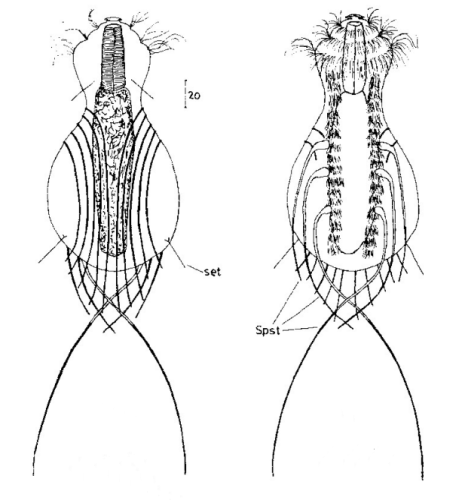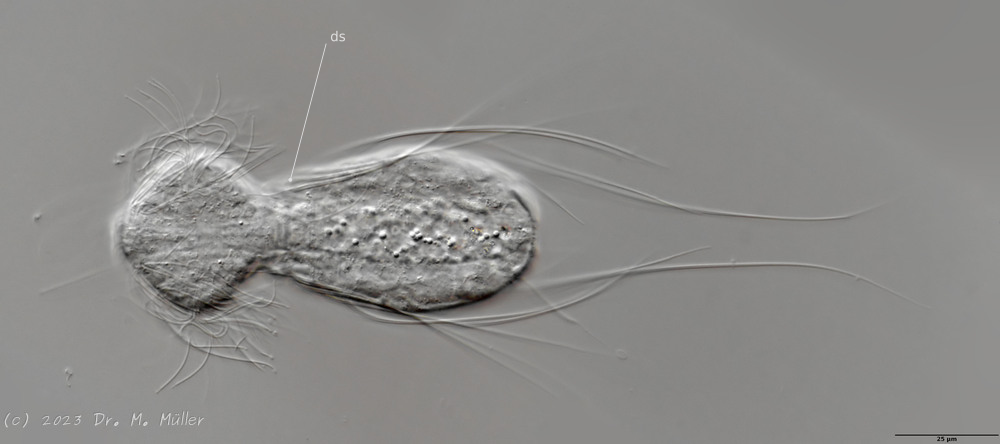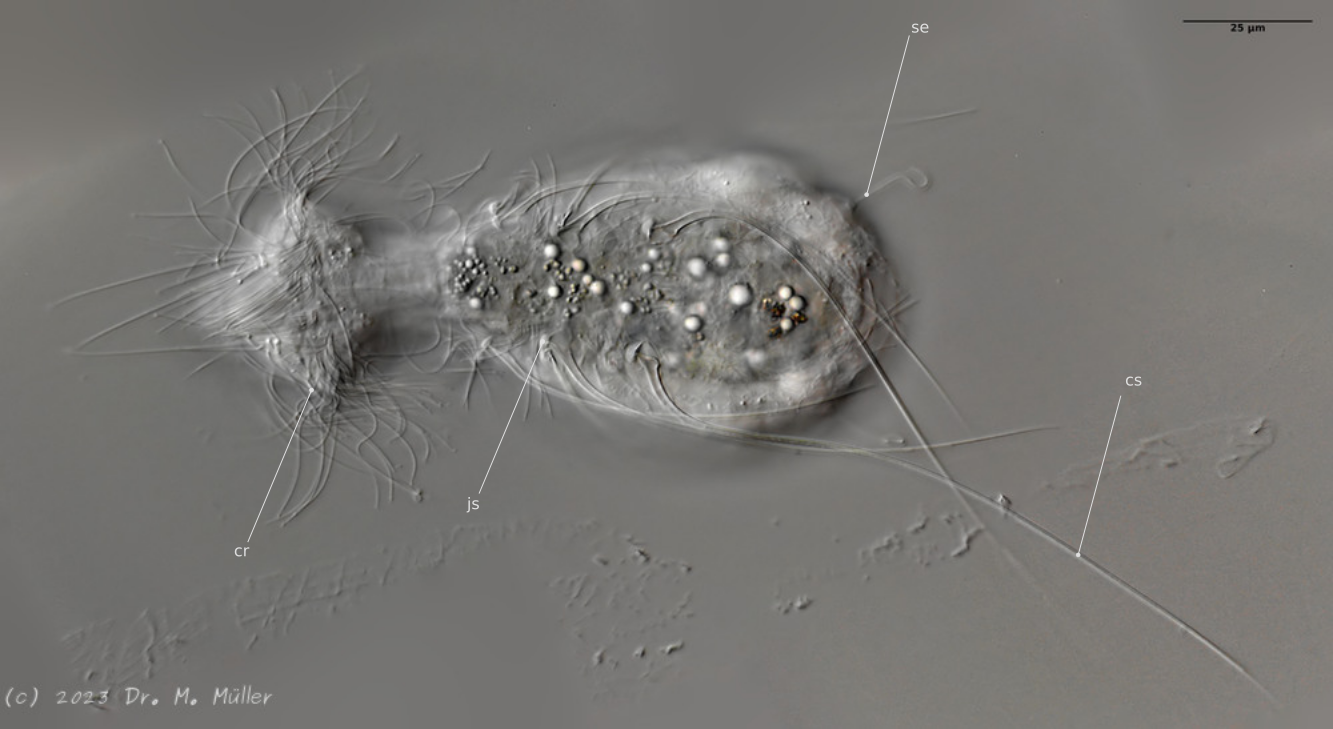Haltidytes crassus

200 µm - 209 µm
Width:
95 µm - 107 µm
Width of the head ( five-lobed ):
58 µm - 60 µm
Width of the neck:
43 µm µm
Length of the furca:
Adhessive tubes (none):
Pharyx ( cylindrical ):
63 µm
Diameter of the mouth ( around ):
unknown
Dorsal scales:
No scales; 5 pairs of non-crossing elastic spines projecting above the body; two spines each starting ventrally
Ventral scales:
no scales; 3 pairs of long jump spines (100 - 240 mm); posterior ones overhang the body by one body length and cross each other
Oecology:
over mud, formerly frequent, meanwhile rare
Similar species:
H. festinans : lower number of jump spines
Particularities:
Setae stand on clear papillae
Haltidytes crassus was a relatively common species at the time of its first description. Since then - probably due to the influence of industrial agriculture - this pretty gastrotrich has become very rare.
The main characteristic of H. crassus are the five dorsal and three ventral “jumping spines”, with which the animal catapults itself out of the danger zone when threatened.
 Dorsal; ds: dorsal spines (5 pairs).
Dorsal; ds: dorsal spines (5 pairs).
The long, caudal and hair-shaped last ventral pair of spines, which far overhang the body and cross each other in resting position, is conspicuous. Three ciliary rings on the head are used for swimming locomotion, while the ventral ciliary bands typical of gastrotrichs are used for gliding over the substrate.

Ventral; cr: 3 ciliary rings for locomotion; js: jump spines; cs: long caudal spines; se: seta on papillae.
The posterior palps - as in all members of the genus Hatidytes - are on distinct papillae.

Median; br: “brain”; ph: pharynx; oo: mature ovum; in: “intestine”; mf: muscle fibers that move the jumping spines.
The internal anatomy has some peculiarities. For example, distinct muscle fibers can be seen that couple to the attachment sites of the jumping spines. Adhesive glands and the associated adhesive tubes are not present in this genus.
The typical movement and behavior of the animals can be seen in the following YouTube video:

Movie about Haltidytes crassus
(Greuter, 1917)